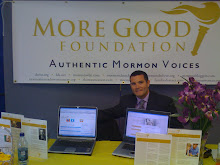
|
LIGHTNING Lightning is an underrated hazard that occurs during thunderstorms, tornadoes, hurricanes and volcanic eruptions. When thunderstorms threaten your area get inside a home, large building or car (not convertible). | | ||
| SAFETY TIPS 1. Inside a home, avoid bathtubs, water faucets and sinks because metal pipes can conduct electricity. Avoid using the telephone, except for emergencies. 2. If outside, with no time to reach a safe building or an automobile, follow these rules:
3. If you are isolated in a level field or prairies and you feel your hair stand on end (which indicates that lightning is about to strike), drop to your knees and bend forward putting your hands on your knees. Do not lie flat on the ground. 4. Learn CPR it could very well save someone's life who may or may not have been struck by lightning.
ANOTHER WEATHER WORRY Microbursts According to the NOAA Comprehensive Glossary of Weather Terms for Storm Chasers, a microburst can occur with precipitation or without and may or may not produce lightning. Microbursts are synonymous with downbursts or downdrafts, that is a small concentrated downdraft that may affect an area less than 2.5 miles across. Most microbursts are rather short lived ( 5 minutes or so). The strong winds produce damage comparable to a tornado, but no loss of life has been attributed to microbursts. Observing ground conditions is your best bet to identifying the location of microbursts. During dry conditions microbursts will produce visible signs of dust plumes, or rings of blowing dust. During wet microbursts, the direction and shape of precipitation shafts also known as virga can be tell-tale signs. In wet microbursts, the shaft is bent at the bottom in a horizontal direction making it look as though the thunderhead has a rain boot. Information from the Utah office of Emergency Preparedness | |||






No comments:
Post a Comment